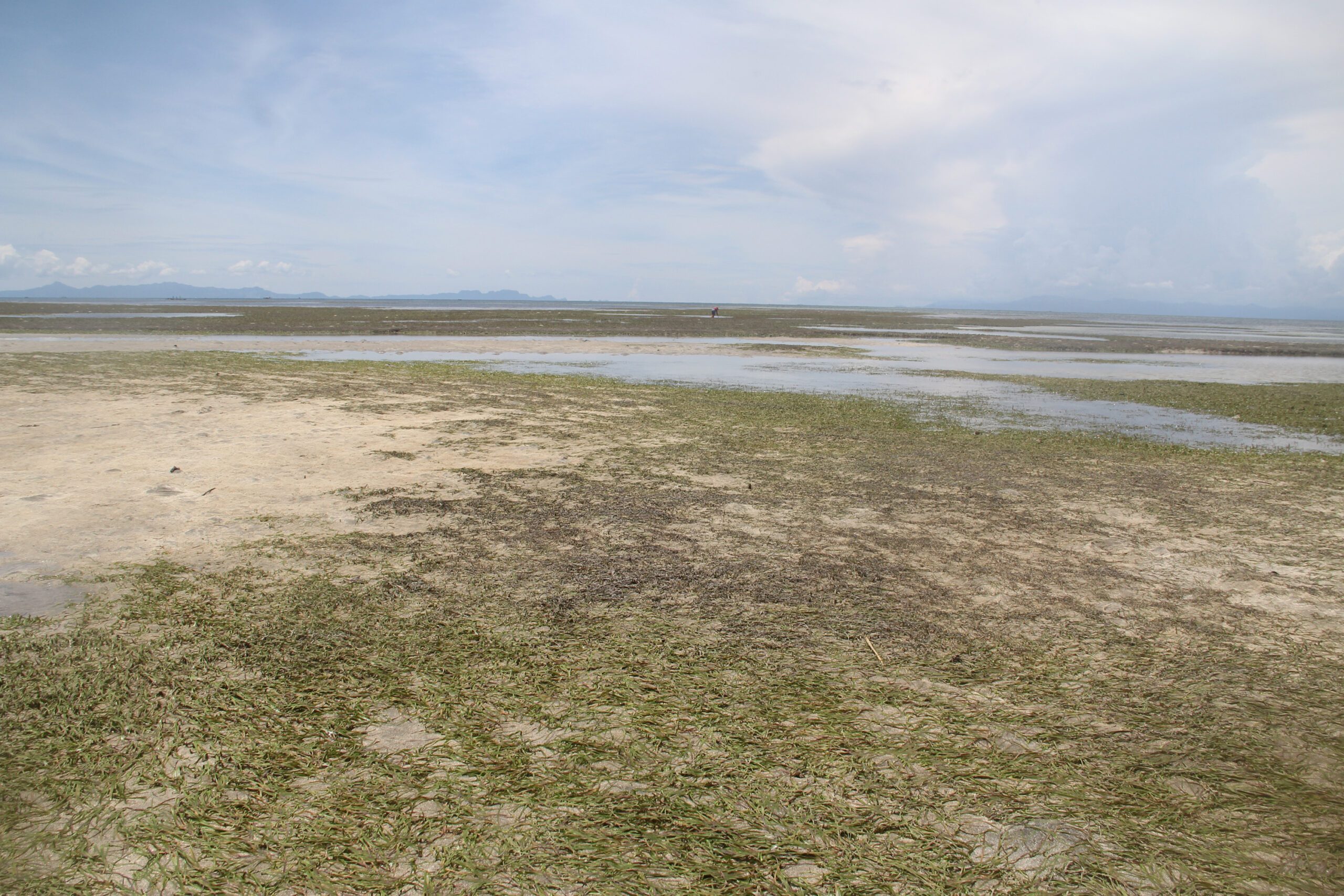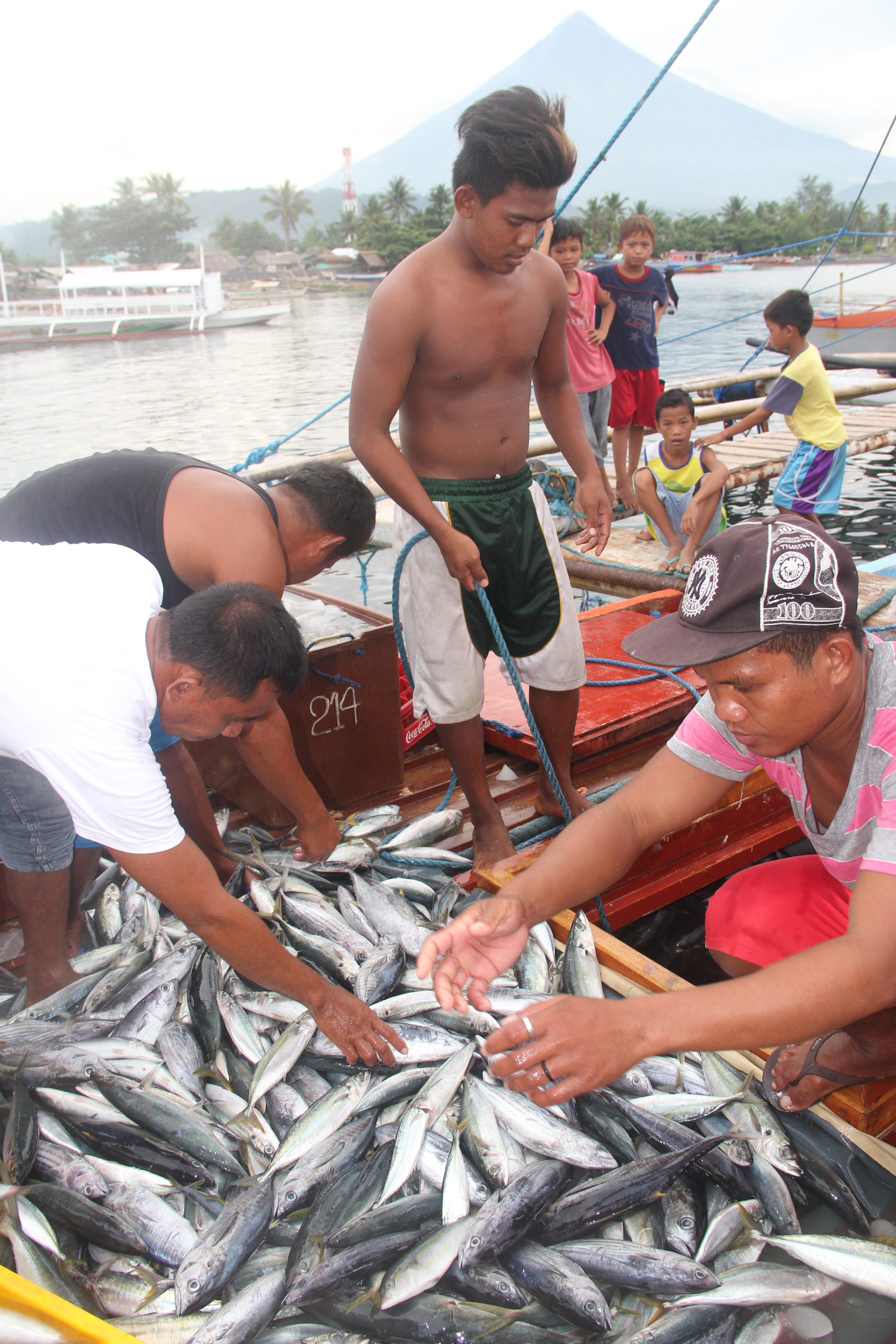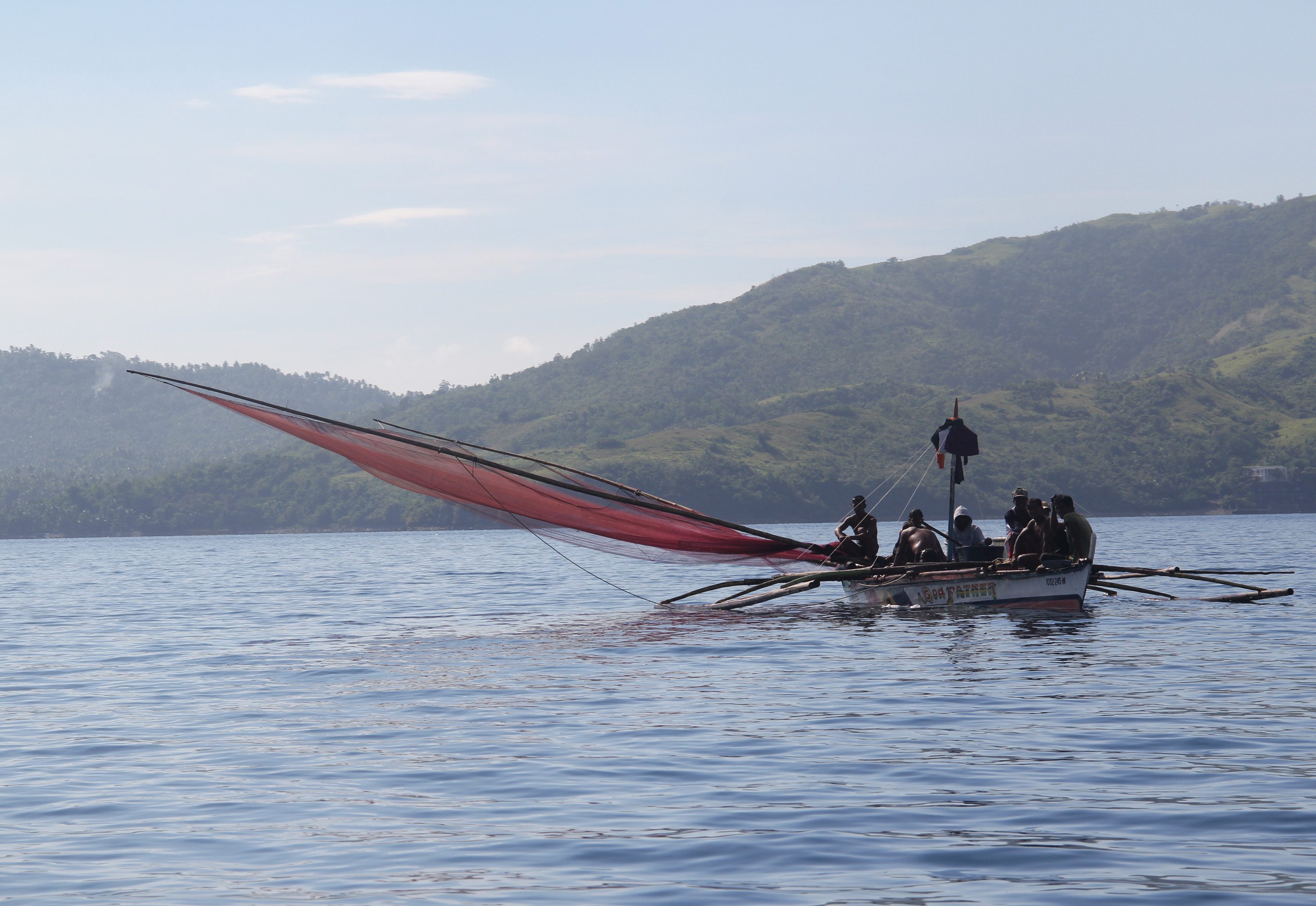SUMMARY
This is AI generated summarization, which may have errors. For context, always refer to the full article.

ALBAY, Philippines – As soon as the waters of Cagraray Island in Bacacay town recede at low tide and bare the seagrass bed beneath, Marcy and her 10-year-old son can be seen rushing to the shore.
Toting eco bags and bolos, Marcy, 53, and son Jeric search the seagrass – called bariw-bariw here – for seashells which they sell for a living.
Low tide lasts for about two to 3 hours, enough for mother and son to do their work. They sell a medium eco bag filled with different seashells to villagers and local tourists for P60.
Sarad, kudkud, and other seashells can be found on Lagonoy Gulf’s seagrass garden, which feeds and shelters different marine species.
Residents of Barangay Buang and adjacent viillages Uson and Salvacion have been collecting seashells since the 1960s.
The seagrass garden used to be vast and dense but it began to thin out and shrink over time because of the rising sea temperature.
The villages of Uson, Buang, and Salvacion face the Pacific Ocean. Big waves hit their coastline from July to February.
The big waves from the Pacific Ocean and sea acidification due to climate change created the Wara-Wara sandbar, which used to be covered with seagrass, according to Salvacion resident Louie Bonaobra, 40.
Over 3 decades, the sandbar expanded from just a tiny area of white sand to almost 3 hectares. Wara-Wara sandbar can be found between the islands of Cagraray, the famous white beaches of Bacacay, and San Miguel in Tabaco City.
Warning signs
Senator Loren Legarda, chair of the Senate committee on climate change said that oceans have absorbed about a third of global carbon dioxide emissions, causing acidification. This has also resulted in coral bleaching.
Legarda said in a statement that vital action to protect the oceans is critical to limit global warming and safeguard the world’s oceans.
“Ocean acidification is causing irreversible damage to coral reefs. With global warming of up to 2°C, 98% of coral reefs will die by 2050. A World Bank study shows that this would cause decrease in marine fish capture by about 50% in the southern Philippines by the year 2050,” she said.

“For an archipelagic country like the Philippines, this unravelling scenario is a nightmare due to threats of inundation, decrease in fish catch, and weak tourism in marine environments. Rising sea surface temperatures and ocean acidification are projected to cause major damages to coral reef systems,” the senator added.
The lawmaker explained that reefs are complex ecosystems that are vital to the continuity of life in the sea as it protect coastlines from wave and storm erosion and function as nurseries and habitats for thousands of marine species.
They are ultimately connected to mangrove forests, seagrass beds, and countless other ecosystems. She said that carbon emissions reduction is crucial in protecting our oceans.
Restoration of mangroves, seagrass beds and marshes, which absorb up to five times more carbon than tropical forests, will help alleviate ocean acidification. These coastal ecosystems likewise serve as buffers for storm surge and tsunami.
“We have relied so much on the oceans for our existence – for food, for employment, for energy and for recreation. However, global warming, rapid population growth along with unsustainable marine practices such as overfishing, waste dumping, oil spills, among others, have seriously damaged marine habitats and life in the sea over the years,” Legarda stressed.
Legarda urged the public to adopt responsible fishing practices and sustainable marine management.
Measures
Oceans cover two-thirds of the earth’s surface and are the very foundations of life.
UN Secretary General António Guterres said in a statement sent to Rappler that the problems of the ocean – all created by human activity – can all be reversed and prevented with decisive, coordinated action.
Guterres warned that the special relationship between people and the ocean is under threat as never before. (READ: UN chief: Save oceans to avert ‘global catastrophe’)

“Oceans are a testing ground for the principle of multilateralism,” he said. “The health of our oceans and seas requires us to put aside short-term national gain, to avoid long-term global catastrophe. Conserving our oceans and using them sustainably is preserving life itself.”
The UN reported that the global marine protected area target of 10% by 2020 has increased nearly twenty-fold since 1993, and has more than doubled since 2010.
This target was agreed upon by parties to the Convention on Biological Diversity in 2010. It was also adopted by UN member states as part of Sustainable Development Goal (SDG)14.
The call for action stresses the need to implement SDG 14 and also addresses its interlinkages with other SDGs. In the call for action, countries agree to implement long-term strategies to reduce the use of plastics and microplastics, such as plastic bags and single-use plastics.
Countries also agree to craft and implement effective adaptation and mitigation measures on ocean and coastal acidification, sea-level rise, and increase in ocean temperatures; and to address the other harmful impact of climate change on the ocean. – Rappler.com
Add a comment
How does this make you feel?
There are no comments yet. Add your comment to start the conversation.